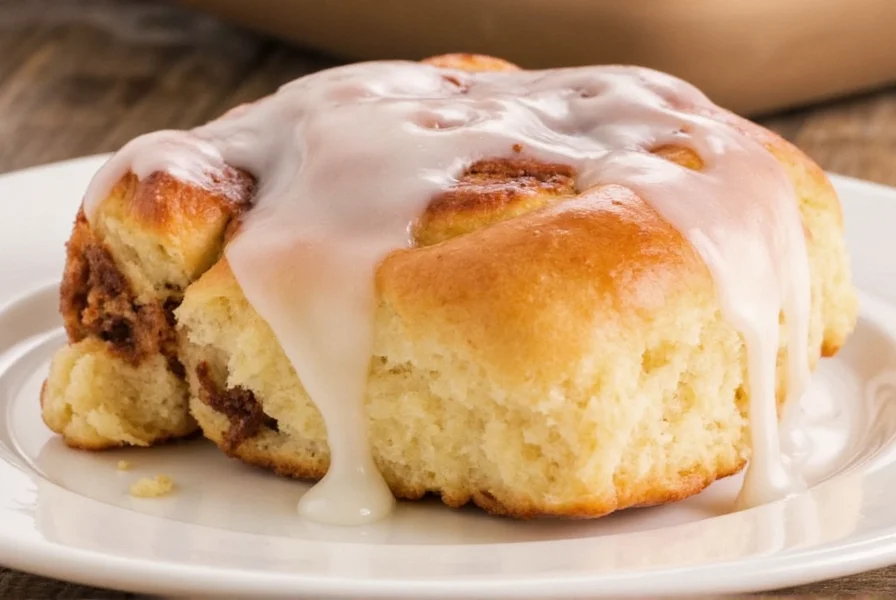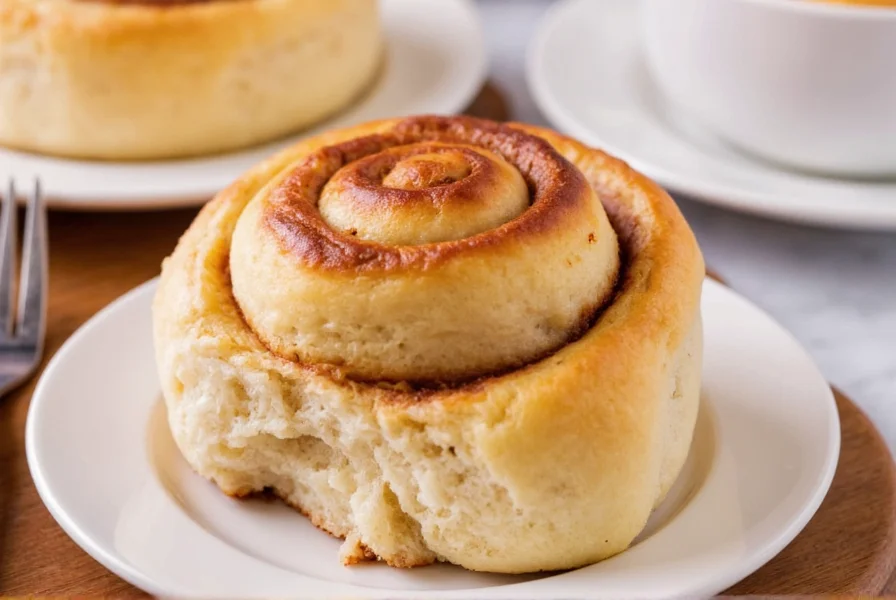There's nothing quite like the aroma of freshly baked cinnamon rolls filling your kitchen. While store-bought options exist, nothing compares to homemade rolls made with care and quality ingredients. This comprehensive guide shares a perfected cinnamon roll recipe developed through years of testing, ensuring you achieve bakery-quality results with restaurant-worthy flavor in your own kitchen.
Why This Tasty Cinnamon Roll Recipe Works
Many home bakers struggle with dense rolls, weak cinnamon flavor, or icing that doesn't complement the pastry. Our best cinnamon roll recipe for soft fluffy rolls addresses these common pain points through precise ingredient ratios and technique. Unlike rushed recipes that skip crucial resting periods, this method honors the science of yeast dough while maximizing flavor development.
Essential Ingredients for Perfect Cinnamon Rolls
The quality of your ingredients directly impacts the final result. Here's what you need and why each component matters:
| Ingredient | Why It Matters | Pro Tip |
|---|---|---|
| Active dry yeast | Creates lift and airy texture | Test viability in warm liquid before use |
| Unsalted butter | Rich flavor and tender crumb | Use European-style (82% fat) for best results |
| Ceylon cinnamon | Milder, more complex flavor than cassia | Toast lightly before using for deeper flavor |
| Bread flour | Higher protein creates ideal structure | Substitute with all-purpose plus 1 tbsp vital wheat gluten |
Step-by-Step Tasty Cinnamon Roll Recipe

Dough Preparation (1 hour 45 minutes)
- Activate the yeast: Combine 1/4 cup warm whole milk (105°-110°F), 2 1/4 tsp active dry yeast, and 1 tbsp granulated sugar in a small bowl. Let sit 5-10 minutes until foamy.
- Mix wet ingredients: In stand mixer bowl, combine 1/2 cup warm milk, 1/3 cup melted butter, 1 large egg, and 1/4 cup granulated sugar. Mix until combined.
- Add dry ingredients: Mix in 4 cups bread flour, 1 tsp salt, and activated yeast mixture. Knead with dough hook 8-10 minutes until smooth and elastic.
- First rise: Place dough in greased bowl, cover with damp cloth, and let rise in warm spot for 1 hour or until doubled.
Filling and Shaping (25 minutes)
- Prepare filling: Mix 1 cup softened butter, 1 1/2 cups packed brown sugar, 3 tbsp Ceylon cinnamon, and 1/4 tsp salt until smooth.
- Roll dough: Punch down risen dough and roll into 18x12 inch rectangle on floured surface.
- Spread filling: Evenly spread butter-sugar mixture, leaving 1/2 inch border. Roll tightly from long side.
- Cut rolls: Using dental floss technique, cut into 12 equal pieces. Place in greased 9x13 inch pan.
Baking and Finishing (25 minutes)
- Second rise: Cover and let rise 30 minutes while preheating oven to 375°F.
- Bake: 20-22 minutes until golden brown. Don't overbake - they'll continue cooking off heat.
- Prepare icing: While baking, mix 4 oz cream cheese, 1/4 cup butter, 1 1/2 cups powdered sugar, and 1 tsp vanilla.
- Finish: Immediately drizzle warm rolls with icing, allowing it to melt into crevices.
Pro Tips for the Best Cinnamon Rolls
- Dough temperature matters: Keep dough around 78°F during rising for optimal yeast activity
- Perfect cinnamon sugar ratio: Use 3 parts brown sugar to 1 part cinnamon for balanced sweetness
- Avoid dense rolls: Don't skip the second rise - it creates the signature pull-apart texture
- Storage secret: Freeze unbaked rolls for quick breakfasts - thaw overnight in fridge
Troubleshooting Common Cinnamon Roll Problems
Even experienced bakers encounter issues. Here's how to fix the most common problems with your homemade cinnamon roll recipe with yeast:
- Dense rolls: Usually caused by too much flour or inactive yeast. Measure flour by weight (500g) rather than cups.
- Flat rolls: Over-rising or too-warm environment. Keep second rise to 30 minutes maximum.
- Bland flavor: Use high-quality Ceylon cinnamon and fresh spices. Toasting spices enhances flavor.
- Soggy bottoms: Place pan on lower oven rack and ensure proper oven temperature with thermometer.
Delicious Variations to Try
Once you've mastered the easy cinnamon roll recipe for beginners, experiment with these popular twists:
- Apple cinnamon rolls: Add 1 cup finely diced apples to the filling
- Maple pecan: Replace brown sugar with maple sugar and add toasted pecans
- Vegan version: Use plant-based butter and flax egg (1 tbsp ground flax + 3 tbsp water)
- Gluten-free: Substitute with 400g gluten-free flour blend plus 1 tsp xanthan gum
Storing and Reheating Instructions
Proper storage maintains freshness and texture. For best results when making how to make cinnamon rolls from scratch:
- Room temperature: Store covered for up to 2 days (icing may soften)
- Refrigerator: Keep in airtight container for up to 5 days
- Freezer: Wrap individual rolls in plastic, then foil. Freeze up to 3 months.
- Reheating: Microwave 15-20 seconds or warm in 300°F oven for 8-10 minutes
Frequently Asked Questions
What's the perfect cinnamon to sugar ratio for rolls?
The ideal ratio is 1 part cinnamon to 3 parts brown sugar (for example, 3 tablespoons cinnamon to 1 cup packed brown sugar). This balance provides robust cinnamon flavor without overwhelming sweetness. For a stronger spice profile, increase to 1:2 ratio, but avoid exceeding this as pure cinnamon can become bitter.
Can I prepare cinnamon rolls the night before?
Yes, you can prepare rolls up to the second rise, then refrigerate overnight. After shaping and placing in pan, cover tightly and refrigerate for 8-12 hours. The next morning, remove 30 minutes before baking to take the chill off, then bake as directed. This cinnamon roll recipe make ahead method actually enhances flavor development.
Why did my cinnamon rolls come out dense?
Dense rolls typically result from too much flour, inactive yeast, or insufficient rising time. Measure flour by weight (500g for this recipe) rather than cups to avoid compaction. Ensure your yeast is fresh and properly activated in warm (not hot) liquid. Allow full rising time - the dough should double in size. Over-kneading can also develop too much gluten, creating tough rolls.
How do I prevent the filling from leaking out?
To prevent filling leakage, leave a 1/2-inch border free of filling along the edge where you'll seal the roll. When rolling, apply gentle but firm pressure to create a tight spiral. Use the dental floss cutting method rather than a knife for clean cuts that won't unravel. Finally, avoid overfilling - the ideal filling thickness is about 1/8 inch across the dough surface.
Can I make cinnamon rolls without yeast?
While traditional homemade cinnamon roll recipe with yeast produces the best texture, you can make a quick version using baking powder. Replace yeast dough with biscuit dough (2 cups flour, 1 tbsp baking powder, 1/2 tsp salt, 2/3 cup cold butter, 3/4 cup milk). Roll out, add filling, and bake at 400°F for 15-18 minutes. Note that texture will be more biscuit-like rather than the characteristic pull-apart yeast roll texture.











 浙公网安备
33010002000092号
浙公网安备
33010002000092号 浙B2-20120091-4
浙B2-20120091-4